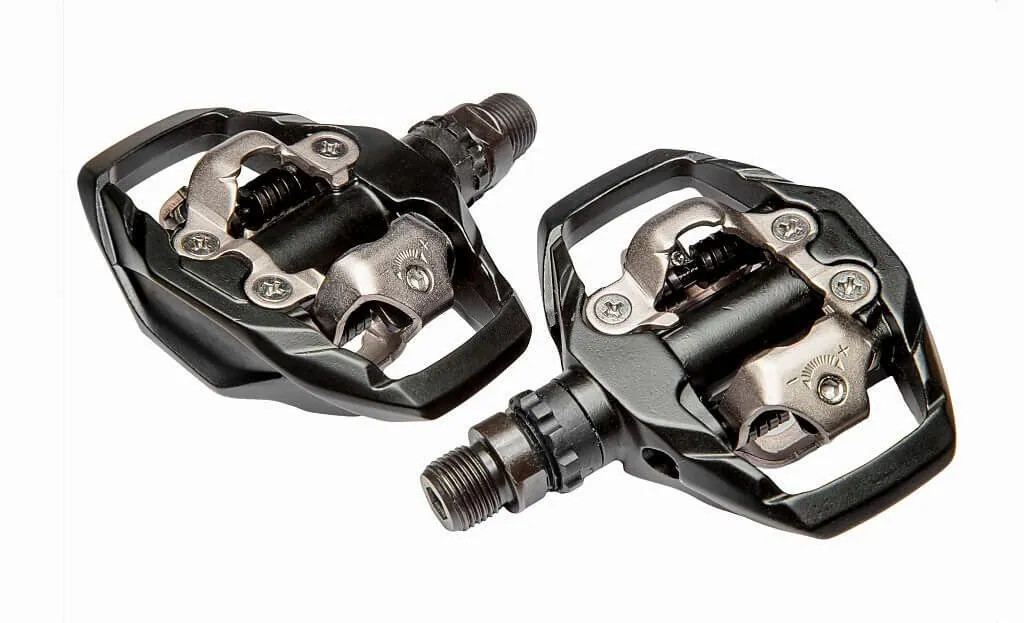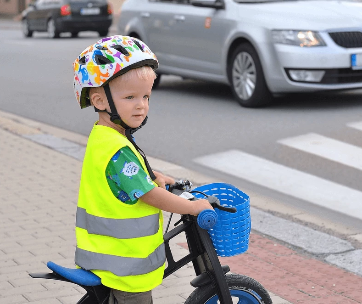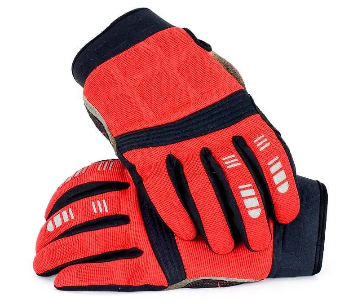It is difficult for adults to transition from flat pedals to clipless pedals. Now imagine how much more difficult it is for young kids to do so. This is something we have noted in our circles and we thought it would be nice to research the topic and provide parents with information. Information that will help them to transition their kids to clipless pedals in a smooth manner. This post will reveal to you what exactly you need to do to smoothly transition your kid to clipless pedals.
Let’s begin.
What are Clipless Pedals?
Clipless pedals are special pedals that have a system in the middle of them that attaches to the cleat beneath compatible cycling shoes They are clipless in the sense that they do not need a clip for the attachment. The lack of a clip makes the attachment between the pedals and the compatible shoes to be very easy.
Clipless pedals are an innovation of the clip pedals. Clip pedals emerged a long time ago to ensure efficiency in pedaling. When pedaling a bike with flat pedals, every time you pedal one full circle, there are moments both of your feet will momentarily disconnect with the pedal. This often results in a bit of a loss of momentum/speed, which is not a great thing when one is racing or competing. Because of this clip pedals were invented. The pedals ensured and still ensure the cyclist’s feet are attached to the pedals at all times. This ensured continued connection and momentum at all times.
While clip pedals ensured continued connected and momentum at all times, they also make it a bit difficult for the rider to dismount quickly. In many cases, they made cyclists to fall down while attempting to dismount. This is what led to the invention of clipless pedals. The pedals were designed and released into the market to ensure cyclists forever stayed connected to their pedals when cycling, and that dismounting or disengaging the pedals could be done quickly and effectively.
The best clipless pedals are clipless in the sense that they do not have a clip to attach to shoes. Instead of having a clip, they have a special system that attaches to special compatible matching shoes. The shoes typically have a cleat beneath that attaches to the special pedals and gets locked to prevent accidental disconnection. This makes clipless pedals much more effective than clip pedals, especially for racing or competing. They also clearly much more effective than flat pedals because they do not disengage easily, hence they ensure continued power and speed; something that flat pedals cannot do.
Check out our review of the best flat pedals for kids’ bikes.
Pros and Cons of Clipless Pedals
Like most things, clipless pedals have pros and cons. Below you will discover the main pros and cons of these special pedals.
Pros
- Clipless pedals help to maintain speed and momentum. The best thing about clipless pedals is that they prevent disconnection between the pedals and feet; this helps the cyclist to maintain speed and momentum especially during competitions
- Clipless pedals help to minimize energy use. Clipless pedals ensure continued connection between the cyclist’s feet and the pedals. This helps to ensure maximum energy is spent on every stroke making long rides and climbing easy.
- They minimize knee problems. Modern clipless pedals enable the cyclist’s feet to float a bit during every pedaling stroke. This helps to minimize knee problems.
- They help cyclists to disembark quickly. One of the biggest advantages of installing clipless pedals rather than clip pedals is that they help the cyclist to dismount quickly. This is perfect especially when the cyclist is traveling over uneven terrain or somewhere with obstacles where they have to dismount from time to time.
- Clipless pedals don’t catch roots, straps, and debris. These pedals have a clip and, therefore, they can trap or snag debris, roots, and so on. In contrast, clipless pedals do not have a clip. Therefore, they don’t catch roots, straps, and debris.
- They are more comfortable to pedal. Bikes with clipless pedals are known to be much more comfortable to pedal than those with clip pedals and even those with flat pedals.
- They are very safe to use. These pedals have no cage on top. Therefore, they cannot cut into your light cycling shoe or chafe your foot.
- They look cool. Clipless pedals are the coolest pedals on the market. They are cool because they look very minimalist, contemporary, and sleek.
Cons
- They can be difficult to clip. Sometimes clipless pedals are difficult to clip. However, it is important to mention that this usually depends on the brand and the model. Most are very easy to clip.
- They need frequent cleaning and maintenance. These pedals need frequent cleaning and maintenance especially if you cycle close in or close to a muddy or dusty area. Without frequent cleaning, dirt can get stuck in the pedals and make it difficult or impossible for you to attach your cycling shoes.
- They can unclip suddenly. Cheap clipless pedals can become unclipped unexpectedly resulting in a crash or an accident. You can avoid this by going for a non-cheap pair of clipless pedals.
- They are very minimal. Clipless pedals typically have a very small footprint, meaning less foot on pedal. Some people do not like this, while
Types of Clipless Pedals for Kids Depending on their Age
The differences in types of clipless pedals are mainly in the system that attaches to the rider’s shoe. Below are the main types of clipless pedals and their uses.
1. Look Keo
Look Keo clipless pedals were introduced to the market decades ago. They are among the most common type of clipless pedals in the world. They have a 3-bolt design plus a large area for the cleat attachment. The large area for cleat attachment means a properly attached compatible cycling shoe cannot easily or unexpectedly come off. Look pedals typically use a standard coil spring or a carbon leaf spring for cleat attachment. Both of types of cleat retention devices are adjustable. This means you can adjust either of them to make cleat release easy or tight. Amateur clipless pedal users prefer the easy setting while experienced ones prefer the tight setting.
There are several different variations of Look Keo clipless pedals. They all have their pros and cons. The only drawback to using these pedals is that they need frequent maintenance. However, this is true for most clipless pedals. Look Keo pedals ae perfect for commuting, road racing, and road riding.
2. Shimano SPD double-sided
These pedals are commonly used by commuters, gravel grinders, and mountain bikers. They have been on the market for over two decades and they still look roughly the same way they looked when they were released ages ago.
The best thing about these pedals is that they are double-sided. This makes clipping or attaching them very easy. The design of the cleat retention recess on the pedals is such that the sole of the cyclist’s shoe is flat. This allows cyclists to walk easily with their cycling shoes when necessary. Moreover, since the cleats do not project from the cycling shoes, they tend to last longer than cleats that project from cycling shoes.
The design of Shimano SPD double-sided pedals is such that they are very easy to clean. It is also such that pedaling them delivers much better power transfer from the cyclist to the bike.
Shimano SPD double-sided pedals are perfect for commuting, touring, cyclocross (gravel bikes), and mountain biking.
3. Shimano SPD one-sided pedals
The Shimano SPD one-sided pedals have an SPD (Shimano Pedaling System) clipless system and a flat pedal design. The flat pedal design looks like a throwback to the flat pedal era but it is not. It is just the perfect design for those who want to transition from flat pedals to clipless ones. It allows riders to use both normal shoes and compatible shoes with cleats. It also allows riders to use attach their cleats while already on the bike.
Like the Shimano double-sided pedals discussed above, these ones are also easy to clean and maintain. This means they can be used even in dusty and muddy environments. The only issue with these pedals is that they are a bit heavier than typical clipless pedals. Nevertheless, for individuals transitioning from flat pedals to clipless pedals, the heaviness is not noticeable.
Shimano SPD one-sided pedals are perfect for leisure riding, commuting, off-roading, and gym bike riding.
4. WAHOO/SPEEDPLAY
Speedplay clipless pedals are specifically designed for use on roads. They have a special minimalist design (they have a lollipop shape). This shape makes them the most unique clipless pedals.
The pedaling platform associated with these pedals on the sole of the cycling shoe rather than the pedal itself as is normally the case. Because of this, these pedals can be adjusted in more ways than typical clipless pedals. They are especially perfect for those with knee problems as they can be adjusted to completely eliminated knee discomfort/pain.
The presence of the pedaling platform on the cycling shoe rather than the pedals themselves is that the shoes have to be lubed and maintained regularly. Nevertheless, since most pedals have to be maintained anyway, this drawback is often not a deal-breaker for many people
These pedals are perfect for road racing.
5. Time pedals
Time pedals look like Look Keo pedals but they work different. Their carbon leaf spring cleat retention system remains open and it only closes and locks the cleat when the cleat is pressed into it. It works kind of like ski-binding.
The cleats on Time pedals are relatively big. They offer a stable and very supportive system for pedaling. It is also noteworthy that they are relatively cheap compared to other cleats. Therefore, they are quite easy to replace.
The only issue with Time clipless pedals is that they are not widely available in physical bike shops. Nevertheless, they can be found online relatively easily.
Time pedals are perfect for road riding and racing.
Skills to Learn Before Transitioning to Clipless Pedals
Now that you understand clipless pedals including the definition and the types, it is time to discover the skills you need to learn to transition from flat pedals to clipless pedals.
1. Pedaling
This is the first skill you need to learn on flat pedals before transitioning to clipless pedals. This is because the best pedals for learning how to pedal are flat pedals. This is because they are simpler and safer to use compared to clipless pedals. They are simpler in the sense that they do not require any special shoes to use. You can literally pedal flat pedals using flip flops. And they are safer in the sense that they are not attached to your feet through your shoes. Therefore, you can easily remove your feet from them to the ground whenever necessary.
2. Bunny Hopping
This is a special skill that is perfect for jumping over small obstacles. While you can bunny-hop using flat pedals or clipless pedals, it is best to learn and master bunny hopping using flats. This is because flats allow you to learn and understand the mechanics of a true bunny hop. By learning this skill on flat pedals, you should be able to transition it quickly and nicely to a clipless pedal.
3. Standing Pedaling
To transition from flats to clipless, you need to learn to stand pedaling first, if you haven’t already. Standing pedaling is a basic bike riding skill. However, this does not mean it does not need to be learned. It is a skill that is best learned on flats. This is because it is much easier to balance on flats than on clipless pedals, as they feet are attached to the pedals (no room for learning how to balance). By learning how to stand pedal on flat pedals, you should be able to transition the skill to clipless pedals much quicker. You should also be able to use standing climbing more frequently.
4. True Balance
It is important to learn true and confident balancing on flat pedals before attempting to use clipless pedals. You need a lot of confidence in your balance to use clipless pedals. Therefore, it is only right that you learn how to balance especially when your bike is stationary. Good balancing when the bike is stationary will buy you a couple of seconds to undo stuck clipless pedals. Poor balancing will not give you the time to unstuck stuck cycling shoes on clipless pedals. So learn balancing, especially stationary balancing, before even thinking about clip pedaling.
5. Lifting The Rear Tire
You should practice lifting the rear tire of your bike while riding it. This skill is a great one to have as it allows you to clear obstacles and perform some basic stunts. Like bunny hopping, this skill is best learned on a bike with flat pedals rather than a bike with clipless pedals. This is because you need to be able to plant your feet to the ground first when learning this skill. And this is not possible with clipless pedals. So make sure you learn this skill before transitioning to clipless pedals.
As you can see above, there is so much to learn before transitioning from flats to clipless. Do not rush this process. It is difficult for adults to master all the above skills. This means it will be even more difficult for kids to do the same. Therefore, take your time teaching your child these skills. Once you feel they have sufficient mastery of these skills, you can transition to clipless.
Tips to Help Kids Transition Smoothly
If you are wondering what to do to enthuse your kids to clipless pedals and use cleats rather than flat pedals, here are some tips and insights that might be worth trying.
1. Make Sure Cleat Placement Is Correct
When you purchase any type of clipless pedal, it will come with a user manual to help you to discover how exactly to use it. You need to use this manual to learn how to use the clipless pedals you will need to buy to transition your kid. You should also search the pedal name to see videos of how it will be used. When watching the videos, you should focus on cleat placement to ensure you know how exactly this is done. Knowing correct cleat placement should enable you to easily assist your kid in clipping their cycling shoes to the pedals.
2. Find A Safe Place to Practice Clipless Pedaling
There is a big difference between clipless pedaling and flat pedaling because the former involves immobilized feet while in the latter the feet are free. Because of this difference, clipless pedaling will always feel different. It is like learning how to ride a bicycle again. Therefore, it needs to be done somewhere safe. So to help your kid transition smoothly to clipless pedaling, you should take them to safe space (maybe your driveway or a bike park) to allow them to practice safely. Nevertheless, if they already have all the skills mentioned in the section above, it will take them about 20 to 30 minutes to get the hang of clipless pedaling.
3. Give Your Kid Support
As mentioned in the point above, transitioning from flat to clipless pedaling is like learning how to ride a bicycle again. Therefore, once you take your kid to a safe place to practice pedaling and your help them to clip in, you should at least hold the seat from the back to give them support. This support will help them balance and to quickly get the hang of pedaling with immobilized feet.
4. Teach Your Kids to Clip Out in Advance
Unlike the case with flat pedaling, one needs to clip out in advance when clip pedaling. This allows for easy disembarking. So you need to teach and remind your kid to start clipping out a few seconds before they come to a stop. This will help to prevent them from crushing or struggling to clip out after they come to a stop (it is more difficult to clip out when stationary).
5. Push Down to Clip Out
Most clipless pedals are designed so that clipping out is achieved by pushing down. Therefore, you need to teach your child this skill when you take them to practice clipless pedal cycling. If clipping out for the specific pedals on his bike is achieved using another skill, you need to teach them that skill. There is no better way to prevent your child from crashing or falling with the bike other than teaching them how to clip out quickly and effectively. If the cleat retention system is adjustable, adjust it so that clipping out is very easy. This will make your kid's transition from flat to clipless very easy.
6. Teach Your Kid to Oil and Maintain the Pedals
The cleat retention system in clipless pedals needs to be oiled and cleaned regularly. Teach your kids to do this to prevent them from getting stuck on the pedals. Because when clipless pedals are not properly oiled and maintained, clipping out becomes very difficult.
Final Remarks
By learning and taking to heart every important bit of information we have shared with you in the sections above, you should be able to help your kid to smoothly transition from flat pedals to clipless pedals. Just one clipless pedaling practice session will probably not be enough. You need to take your kid for several supervised clipless pedaling practice sessions. This way, you will ensure that they know what they are doing when they finally go out clipless pedaling alone or with their friends.





Comments